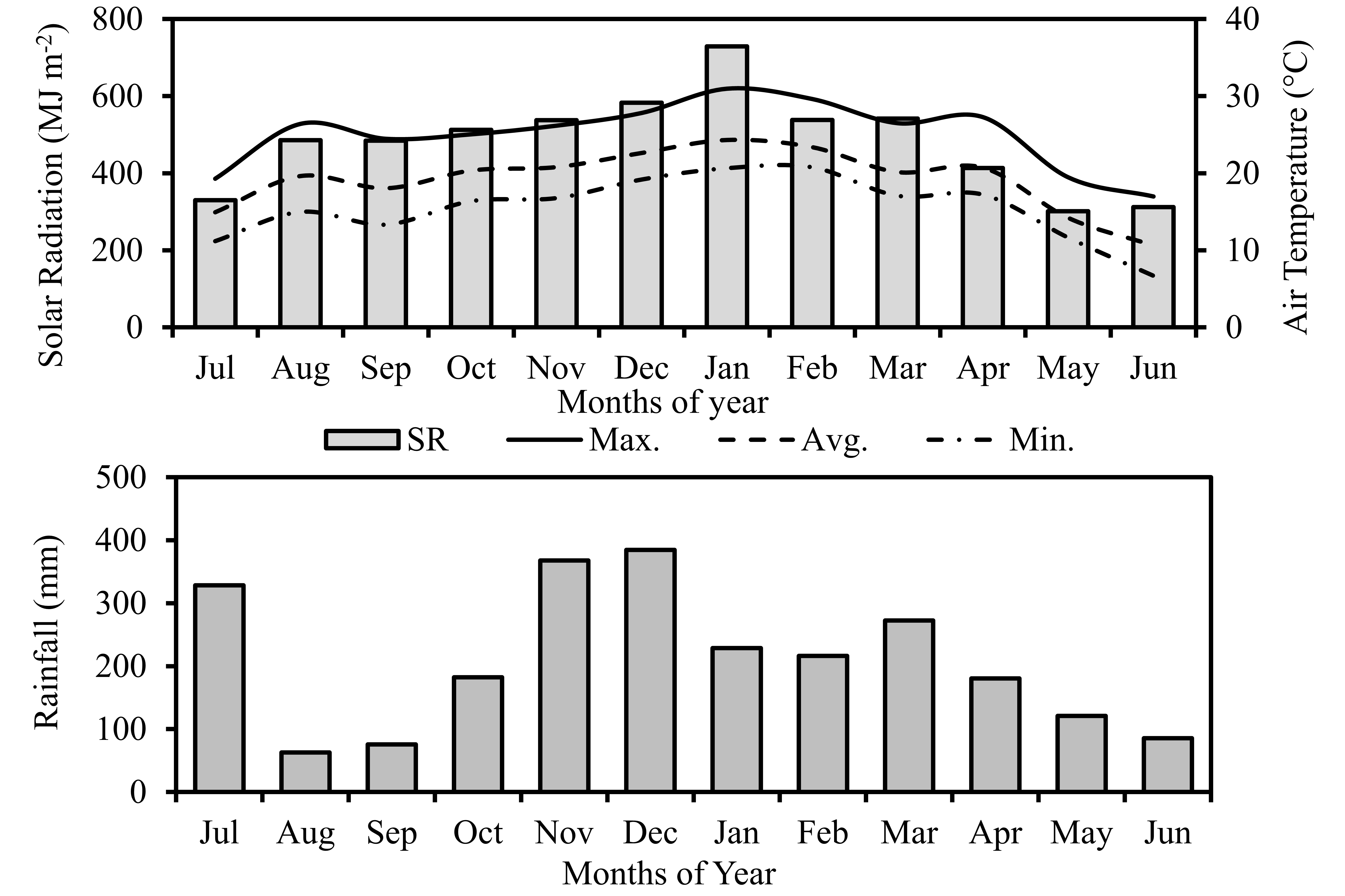Abstract
Sugarcane (Sacharum officinarum L.) monocropping has had a great socio-economic and environmental impact in Brazil, and agroforestry systems have been considered as an alternative for more sustainable production; however, there is a lack of field research under such conditions. The aim of this study was to evaluate the growth rates, radiation use efficiency and yield traits in sugarcane cultivated in the understory of Aleurites fordii, in two agroforestry arrangements and monocropping systems. A field experiment was conducted from July 2015 to June 2016 in the city of Frederico Westphalen, Rio Grande do Sul, Brazil. The radiation use efficiency, assimilate partitioning, leaf area index, absolute growth rate, net assimilation rate, number of tillers, plant height, % of intercepted solar radiation, extinction coefficient, and yield in each system was evaluated. In agroforestry systems, the dynamic interactions between multiple plant species change with the time and can result in unique microclimates. The use of agroforestry systems in 12 x 12m arrangements should be prioritized because it enables greater yields and radiation availability in the understory. This study sought to provide new sustainable alternatives for farmers in order to increase the diversification of the rural property and maintain the preservation of existing agroecosystems.
Key words
biomass partitioning; crop systems; growth rates; Sacharum officinarum; yield traits

 Thumbnail
Thumbnail
 Thumbnail
Thumbnail
 Thumbnail
Thumbnail
 Thumbnail
Thumbnail
 Thumbnail
Thumbnail
 Thumbnail
Thumbnail
 Thumbnail
Thumbnail
 Thumbnail
Thumbnail







